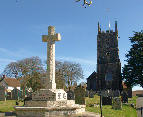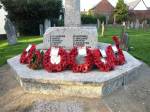The H1N1 Spanish ’flu pandemic (commonly known as the Plague of the Spanish Lady) which lasted from March 1918 to June 1920 is the catastrophe against which all modern pandemics are measured. Although the first cases were registered in the United States, Canada and the rest of Western Europe long before getting to Spain, the 1918 pandemic received its nickname “Spanish ’flu” because Spain, a neutral country in WWI had no censorship of news regarding the disease and its consequences. The Spanish King, Alfonso XIII became gravely ill and was one of the first highest-profile patients about whom there was press coverage, giving the false impression that Spain was most affected. The first phase, in late 1917 and early 1918, was little more than a repetition of the common influenza symptoms that affects populations in most winters. However, in the second and very violent phase, many people died very quickly, with many who felt well in the morning became sick by noon, and were dead by nightfall. Those who did not succumb to the disease within the first few days often died later of complications from the ’flu, such as pneumonia or pleurisy. This unusually severe phase of the disease killed between 2% and 20% of those infected, as opposed to the usual flu epidemic mortality rate 0.1%. One of the most unusual aspects of the Spanish ’flu was the huge death toll caused by an extremely high infection rate, up to 50% of the population among healthy adults of 20 to 50 years old, together with the extreme severity of the symptoms, suspected now to be caused by cytokine storms which overwhelmed the strongest immune systems more easily than the weaker immune systems of children and the middle-aged. Indeed, the symptoms in 1918 were so unusual that initially influenza was often misdiagnosed as cholera or typhoid. One observer wrote, “One of the most striking of the complications was hemorrhage from mucous membranes, especially from the nose, stomach, and intestine. Bleeding from the ears and hemorrhages in the skin also occurred”. The majority of deaths were from bacterial pneumonia caused by the influenza, but the virus also killed people directly, causing massive hemorrhages in the lung. In all, the pandemic killed some 500 million, or about 3% of the world’s population (1.6 billion at the time), spreading even to the Arctic and remote Pacific islands.
Investigative work by a British team, led by virologist John Oxford of St Bartholomew’s Hospital and the Royal London Hospital, has suggested that the major British troop staging camp in Étaples was at the center of the 1918 flu pandemic, the first phase of the disease which brought the virus into to the army. Until the very last weeks of fighting the epidemic was almost unknown at home. The media focus in 1918 was of course on the battle casualties, the huge numbers of wounded pouring back to England with many dying of their injuries, and the general progress of the war with a possible end in sight to the carnage, so that sickness in the camps was virtually ignored. When people read the obituaries, they saw the war or post-war deaths and the deaths from the influenza side by side, so that the ’flu may not have had a great, separate, psychological impact, or may have seemed a mere “extension” of the war’s tragedies. The duration of the pandemic compared to the whole war could have also played a role: the disease would usually only affect a certain area for a month or so before leaving, while the war, which most had expected to end quickly, had lasted for four years by the time the pandemic struck.
Gradually it was realized that the second wave of the pandemic was much deadlier than the first, in that the virus had mutated to a much deadlier form when it returned in August among the troops in France, Sierra Leone and the United States. This has been attributed to the circumstances of the war itself. In civilian life evolutionary pressures favour a mild strain: those who get really sick stay at home and those mildly ill continue with their lives, go to work and go shopping, preferentially spreading the mild strain. In the trenches the evolutionary pressures were reversed: soldiers with a mild strain remained where they were, while the severely ill were sent on crowded trains to crowded field hospitals, spreading the deadlier virus. So the second wave began and the flu quickly spread around the world again. It was the same flu, in that most of those who recovered from first-wave infections were immune, but it was now far more deadly, and the most vulnerable people were those who were like the soldiers in the trenches—young, otherwise healthy adults. By late 1918 and early 1919 the virus had mutated again extremely rapidly to a less lethal strain, returning briefly in 1920 for a ‘normal’ influenza epidemic. This is a common occurrence with influenza viruses; there is a tendency for pathogenic viruses to become less lethal with time, providing more living hosts.
An effort to recreate the 1918 ’flu strain (a subtype of avian strain H1N1), a collaboration among the United States Armed Forces Institute of Pathology, the Southeast Poultry Research Laboratory and Mount Sinai School of Medicine in New York City, resulted in the announcement on 5 October, 2005 that the group had successfully determined the virus’s genetic sequence, using historic tissue samples recovered from a female ’flu victim buried in the Alaskan permafrost and samples preserved from American soldiers. These tissue samples from frozen victims were used to reproduce the virus for study, and today the entire genetic code of the virus has been de-coded and manufactured for laboratory purposes.


